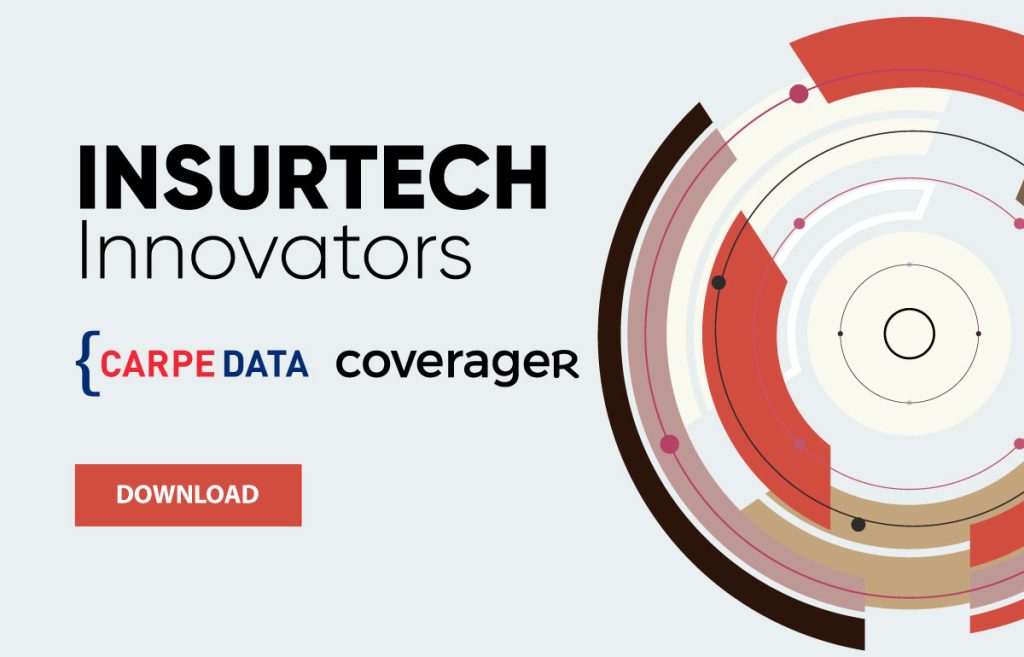Exclusive Interview with Ross Sinclair and Graham Ruffell of EIP
We recently met with the EIP Limited team to discuss successful tactics for launching embedded insurance programs. The following interview with Ross Sinclair, CEO and cofounder of EIP, and Graham Ruffell, Head of Software Development at EIP, transpired after our call:
1. Can you share the story behind the inception of EIP and how it has evolved into a SaaS solutions company for embedded insurance?
EIP was founded in 2004 by Terry Alford, an Australian underwriter, and Ross Sinclair, a UK insurance broker. The two met in the 1990’s whilst working in what would become Europe’s largest retailer of cell phones, The Carphone Warehouse. Over their six-year tenure, they were responsible for building an insurance business (within this retailer), yielding over £100m in annual profit across 13 countries. This success led to the formation of EIP, the first dedicated consulting business working with companies wanting to offer embedded cell phone and device insurance.
In 2010, Ross and Terry had the idea of building a sophisticated cloud-based platform that would be the central hub that suppliers and partners could connect into, thus reducing both the lead-time to market, the cost of implementation and give the flexibility to easily switch a supplier without disrupting other partners. Three years later the platform was born and within a month the Vodafone Group, took a global license on the software. Since 2013, EIP has expanded its presence to operations in 12 countries and managing over 10 million customer records to become the most widely used management software for cell phone and device insurance across Europe.
2. What distinguishes EIP’s platform and services from other embedded insurance solution providers in the market?
First, it easily integrates with any type of external platform using multiple integration methods. Second, it automates all routine processes to reduce the FTE count required to manage an insurance program, ensuring consistency in processing. At the heart of the automation is the claims processing, where a Claims Acceptance Logic (CAL) engine with over 100 configurable rules allows the software to decide the action to take, for example whether to approve a claim or refer it to an agent for further investigation. This means that when a claim is entered online directly by the end customer, it takes just 90 seconds to process the claim end-to-end, compared to the traditional time of 10 minutes or more. This is why, when our platform is implemented, we have seen customer Net Promoter Scores increase by over 40 points and program management costs decrease by more than 50%.
Many of our competitors claim to have ‘automated claims’; however, this typically just involves an online form for the first notification of loss or damage. After that, the claim is passed to a contact center agent for manual review. EIP offers a genuine end-to-end, fully automated claims decision-making and order processing system available in many languages and for hundreds of products.
3. Can you elaborate on the core technologies that power your platform, particularly your proprietary cloud-based software and API-driven architecture?
The platform is built in Microsoft.Net and hosted in the MS Azure cloud. The architecture is incredibly low code which lends itself to extremely high levels of agility, meaning, that our typical time to market is days rather than weeks or months. The platform includes:
- Open API for seamless integration with any partner or point of sales platform
- APIs for Policy, Claims and Fulfilment
- Customer self-care portal for policy management and claims
- Customer document upload and communications management
- Dynamic and user-friendly claims chatbot
- Rules based Automatic claims decisioning
- Real-time data analytics, feedback, and recommendations to drive programme efficiency
4. Improving customer satisfaction is a key benefit of your service. How does EIP’s platform enhance the customer journey and experience, from sales to claims management?
EIP designs products and processes from a customer-centric perspective. Using real-time integration and high levels of automation—over 85% of EIP claims are automated—we reduce costs for insurance suppliers. This approach achieves what has previously been considered impossible by insurance providers: happier customers and increased profits for the client. Our high levels of automation enable us to create a hyper-efficient and consistent customer journey. Deep integration provides relevant information for sales onboarding or claims processing, allowing claims to be compiled in real time without requiring customers to provide details. A good example of this is our patented Autoclaim tool—check it out here.
5. EIP is trusted by industry giants like Vodafone Group and Monzo Bank. What is your approach to forming and maintaining successful partnerships with such entities? What are some highlights and insights gathered about the audience you reach via these two different verticals?
EIP has worked with Vodafone Group for over 15 years. It is very much a partnership and over that time Vodafone’s needs have of course changed. It is therefore critically important that we retain flexibility in our operational structure to be able to accommodate shifts in the client’s requirements. Our company avoids bureaucracy, and as we grow fast, we fight very hard to retain our agility. Our adoption of ISO27001 (essentially the international ‘gold standard’ in information security) a few years ago brought massive new levels of control right across the business, but we implemented it in a flexible way that underpins what we do rather than stifling it.
Another critical factor in our client relationships is that of trust. We do what we say, and we do it fast and efficiently, but we also trust the client to be reasonable and flexible with requests. That requires total transparency of operations with the customer –and it is the foundation of a successful long-term partnership.
Regardless of the distribution vertical, our end-user audiences still require the same services from embedded insurance, albeit perhaps at different stages in the lifecycle. Customers of a digital bank may be younger and more tech-savvy than those of an established cell phone operator, but embedded offers span an entire lifetime. In fact, embedded insurance can often be an individual’s first introduction to the world of insurance. Thus, the relevance of the specific embedded offer to the core product with which it is offered is critical, as well as delivering what the product promises—comprehensive coverage, a user-friendly digital journey, and good service, at the ‘key moment of truth’ for any insurance product, when they claim.
6. Where do you see the future of embedded insurance heading?
Driven by technology, it seems likely that the embedded market will gravitate towards more parametric products – pre agreed settlements automatically triggered by a definable event – or at least a vastly simplified and automated claims process supported by generative AI rather than traditional contact centres.
There is also growing interest in predictive analytics and its role in preventing claims from happening in the first place. This is something that we are looking at very seriously within our data science team at EIP. A cell phone is essentially a GPS transmitter, and we can mine our very large data resources to identify specific metrics that are more likely to give rise to a claim and warn the customer in advance. For example, our data will tell us where there are hotspots in a city for pickpocketing (for example, as we write this, Mobile World Conference is in full swing in Barcelona, a city well-known for its high levels of pickpocketing). Using predictive analytics, we can trigger a real-time notification to a customer who is in that location, reminding them to be extra vigilant. When we can use both technology and data to prevent claims then we further enhance the experience for the customer and the program profitability for the vendor.
7. For insurance professionals looking to venture into or expand their embedded insurance offerings, what advice would you give them based on EIP’s experience and success stories?
There are essentially three ingredients to the ‘secret sauce’ of a successful embedded insurance product:
- Relevance – too many embedded offers today have no connection whatsoever with the core product that they are offered with. We’ve seen pet insurance offered alongside a cell phone contract; extended warranty coverage on a $2.99 USB cable and so on. For an embedded offer to truly resonate it must have some relevance to the core item that the customer is buying
- Zero-touch – or at least very low interaction required to purchase the embedded insurance. Often most of the information required to onboard a customer has already been collected for the core product, so the use of technology to populate that detail without asking for it again is key.
- Deliver on the promises – too many embedded offers have a very polished sales process but then fail miserably at the moment of truth – when the customer has to claim – either because of poorly constructed or overly onerous claims process, or worse, a deliberate intent to try to divert claims. The claims process has to be a positive experience.
It may seem surprising that price isn’t on this list, but in reality, if you get these things right, and the product is well designed, then price becomes much less relevant.
8. What red flags, based on your experience, have you detected and how do you manage them?
First, gaining the required levels of systems integration to achieve a truly seamless experience is not always easy. Client IT departments are always stretched and with long priority lists. For this reason, we operate a single API structure at the front end, meaning that we can offer up an API to the client, or, more commonly, we can consume their API. This single API approach means that we can receive all required client-side information with just a single integration, limiting the technical impact on the client resources. At the back end, we put in place all the integrations with the supply chain, so the client has no need to be involved. Where an API is simply not possible, we can work quite effectively with an SFTP structure.
Second, perception. Clients believe that these products are difficult and complex to integrate within their existing distribution channels. Traditionally this would have been true, but with EIP’s simple orchestration and leading technology, it’s possible to design, build and launch new embedded offers in days.
9. What are reasonable motivators for non-insurance entities to enter the space?
Revenue generation, customer loyalty improvement, competitive advantage, social impact, brand enhancement – all of these are very real benefits for a non-insurance entity to offer well-designed embedded insurance products and solutions.
10. Anything else you’d like to add?
EIP continues to win awards for our innovation. I have mentioned Autoclaim previously, but we also have a number of other features which are patented and unique in the market. Check out Safe Locations and Smart Speak.
To learn more, contact EIP at enquire@eip.tech.



